How to live healthy? Part 2: What are Telomeres?
Welcome back to the series about how to live healthily. In the last article, we discussed the basic concepts of Caloric Restriction Mimetics (CRM) and how they might contribute to your health.
The origin of this series is a reply by @lauch3d in one of my articles about autophagy. He was curious how autophagy & CRM work together to maintain telomeres.
But what are telomeres anyway?
Telomeres are very important for your genetic stability and thus for your health. Therefore, telomeres will be an important issue in the next articles. For a better understanding, it is however of huge importance to become familiar with the molecular basics of telomeres.
The first take-home message for you is: Telomeres are the termini of your chromosomes!
In essence, chromosomes are your DNA strands packed by proteins and located in the nucleus (Fig.1A). However, unlike bacteria, there is not a single ring-shaped "major genome" (Fig. 1B). In humans, there are a total of 23 different linear chromosomes and two copies of each chromosome per somatic cell, therefore a total of 46 chromosomes per somatic cell (= diploid, Fig.1C). Nonetheless, this looks a bit different in your germ cells. Here we find only 23 chromosomes per cell. Germ cells, therefore, don't don't bear an extra copy (= haploid, Fig.1C). The reason is simply that when oocyte and sperm cells merge, the set of chromosomes remains constant.
The basics of chromosome biology are illustrated here:
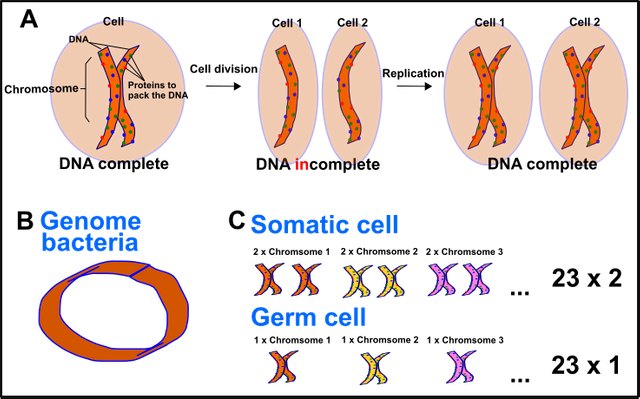
Fig.1 Basic principles of the "Chromosome Theory". Made by Chapper - unrestricted use allowed
But where are the problems with the termini of chromosomes, the telomeres?
I have to admit that use to at school I have not really understood this. Nevertheless, later at the University I finally figured that out.
Many of you probably know a picture that looks something like this:
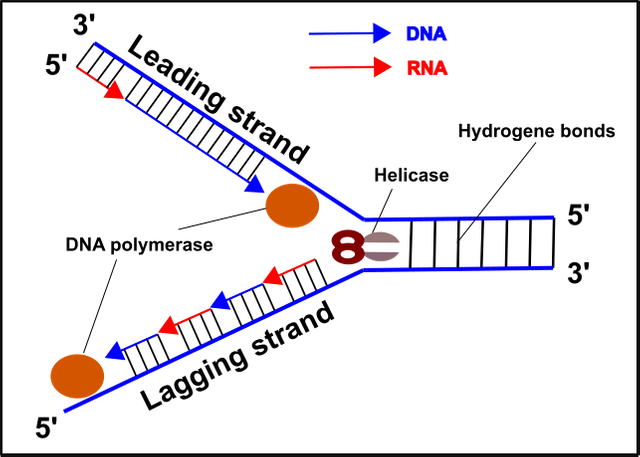
Fig.2 The replication fork. Made by Chapper - unrestricted use allowed
This construct is called the replication fork. In principle, replication is the doubling of your DNA. This doubling becomes necessary as soon as the cell divides to realize that the amount of DNA in both new cells is the same as in the original cell (see also Fig. 1A).
What happens is that initially enzymes (so-called helicases, derived from the term DNA helix) open the DNA. This happens by breaking the hydrogen bonds between the bases of the DNA. Thereafter (or probably concomitantly) the two single strands are stabilized and the so-called DNA polymerase can do its job. The DNA polymerase complements each of the two strands with fresh DNA bases (nucleotides).
And now comes the point I have never understood.
The DNA polymerase is only able to work in a certain direction and this is the so-called 5'-3' direction.
Ok, that was still logic to me, look at this illustration here:
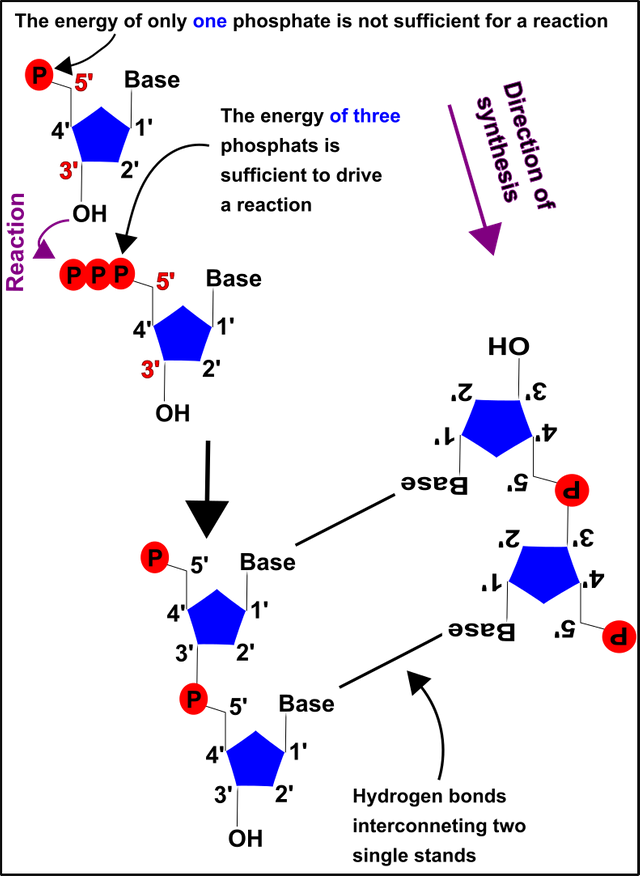
Fig.3 Basics of DNA polymerization. Made by Chapper - unrestricted use allowed
The DNA polymerase always needs a free 3'-OH end, which can react with the 3 phosphates of the fresh nucleotides (please check again my article about autophagy & mTOR regarding what I told you about ATP, which is also a nucleotide). For this reason, the presence of a free 3'-OH end is needed. This free 3'-OH end is placed by a so-called primase before the DNA polymerase can start the work. The primase is a RNA polymerase. Like DNA, RNA is a nucleic acid, except that RNA, has a slightly different chemical structure (for instance, RNA bears also an OH in the 2'-position) and is also more fragile than DNA. To my knowledge, nobody really knows why mother nature hasn't allowed the DNA polymerase to build its own starting point. But the fact is that the RNA polymerase (primase) has the permission/competence.
The primase then build a short piece of RNA on the DNA single strand (a so-called primer). The DNA polymerase can now bind to this primer and start to fill-up the strand. But because of the fact that the DNA is antiparallel, the DNA polymerase has to work in two different directions.
And now comes the point that I've never gotten before. God that almost drove me crazy.
Namely: According to the common textbook illustration (Fig. 2), a primer is applied to one strand where the DNA polymerase can fill-up the remaining strand without any complications (the so-called leading strand). On the other strand, however, fresh primers must be applied again and again, so that the DNA polymerase also starts over again and again (the so-called lagging strand).
I've always asked myself concerning the background of these textbook illustrations. Why is the DNA polymerase on the lagging strand not able to do exactly same as on the leading strand? According to Fig.2, that should be no problem.
The answer is quite simple:
The DNA polymerase works simultaneously as on both strands.
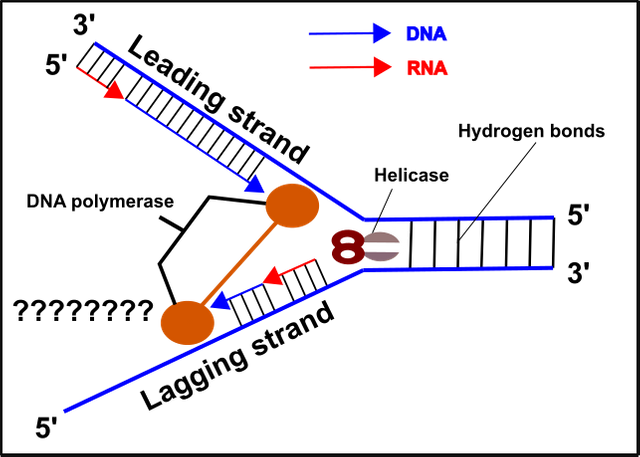
Fig.4 The DNA polymerase works on both strands simultaneously. But how? Made by Chapper - unrestricted use allowed
But how is that supposed to work ???
In principle, the DNA polymerase should be some kind of a "monster enzyme", bigger than the genome. Otherwise, the DNA polymerase would break apart.
But there is an easy solution to this problem!
The lagging stand is not straight. In contrast, the lagging strand is a loop:
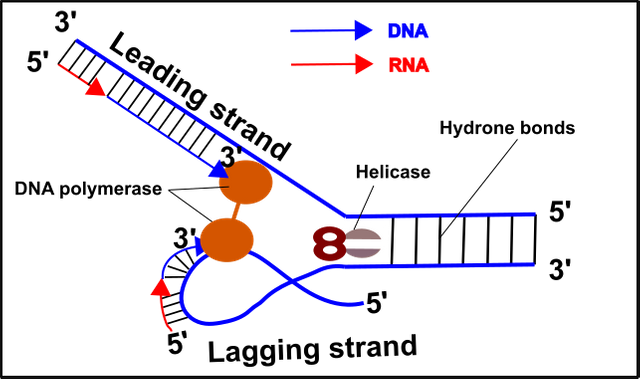
Fig.5 The lagging Strand is put into a loop. Made by Chapper - unrestricted use allowed
This has three consequences:
- The DNA polymerase has to start on the lagging strand with a little delay,
- After reaching the terminus, the DNA polymerase on the lagging strand is pulled along the lagging strand to a new starting point
- After a short while, the DNA polymerase on the lagging strand will come across parts that have been already completed and then have to wait again until the DNA polymerase on the lagging strand is pulled to the next starting point again.
You can find an interesting video on this topic here. From about 2:20 minutes (maybe a bit later) you see exactly how it works.
God, I was happy after I finally understood this! 😉
But important for our telomeres are the following facts:
1. RNA (you remember the primers) has to be removed from the DNA!
2. Further, the gaps have to be closed!
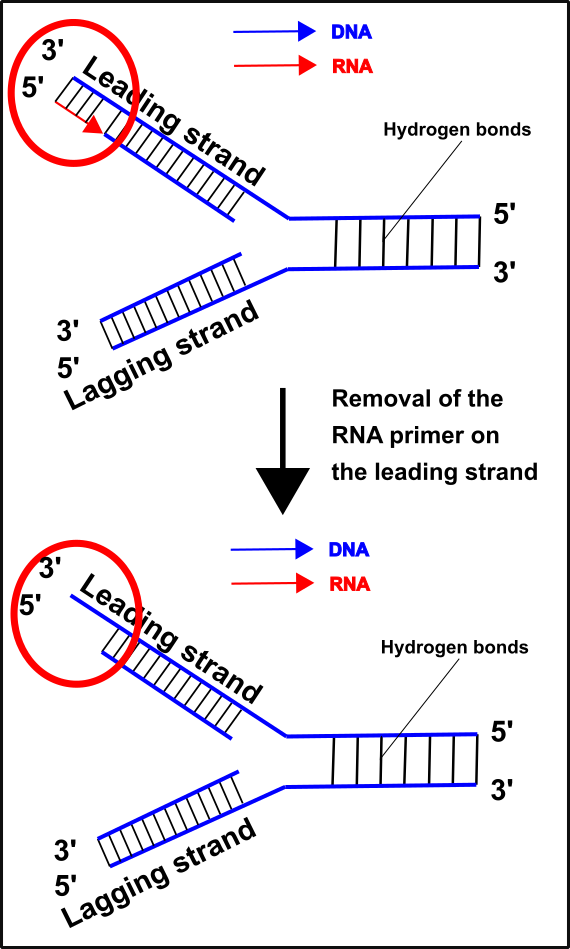
Fig.6 Cause of the End Replication Problem. Made by Chapper - unrestricted use allowed
On the lagging strand, there are no problems (this time). As you can see, the DNA polymerase can fill up the DNA strand until the end and you're done with this. For bacteria, this is not a problem at all, because of the ring-shaped genome. However, there is a problem on the leading strand in humans, because once the primer at the beginning is gone, there is no way to fill up the termini with DNA (remember, the DNA polymerases work only from 5 'to 3' !!!, check Fig.3 again).
This means that after each cell division, the chromosomes are in risk to shrink anytime because single-stranded DNA is recognized as damage by the cellular repairing machinery. This damage is often fixed by the removal of damaged parts:
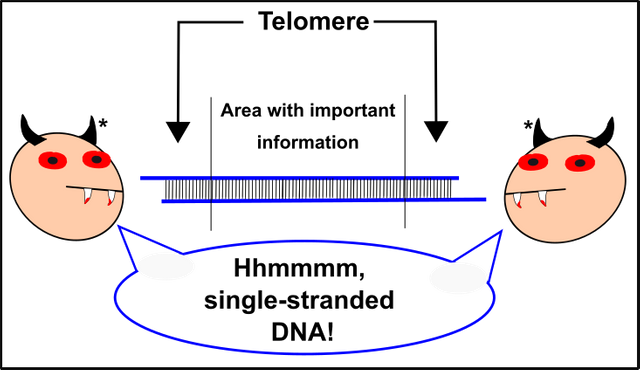
Fig.7 The problem at the ends of the chromosomes. (* Note this is not Our cellular packman, confusion is purely coincidental.) Made by Chapper - unrestricted use allowed
This results in the so-called End Replication Problem!
But no panic! The termini of the chromosomes are in principle not that important because they consist only repetitive sequences with no genes.
Exactly these areas are called telomeres!
This, however, raises two questions:
- Who maintains the termini of the chromosomes in germ cells? Because if the telomeres get shorter and shorter after each division, then there would be no chromosomes left after generations.
- To which extent is the shortening without consequences?
The first question is very easy to answer.
The telomeres in the germ cells are maintained with the help of the enzyme telomerase!
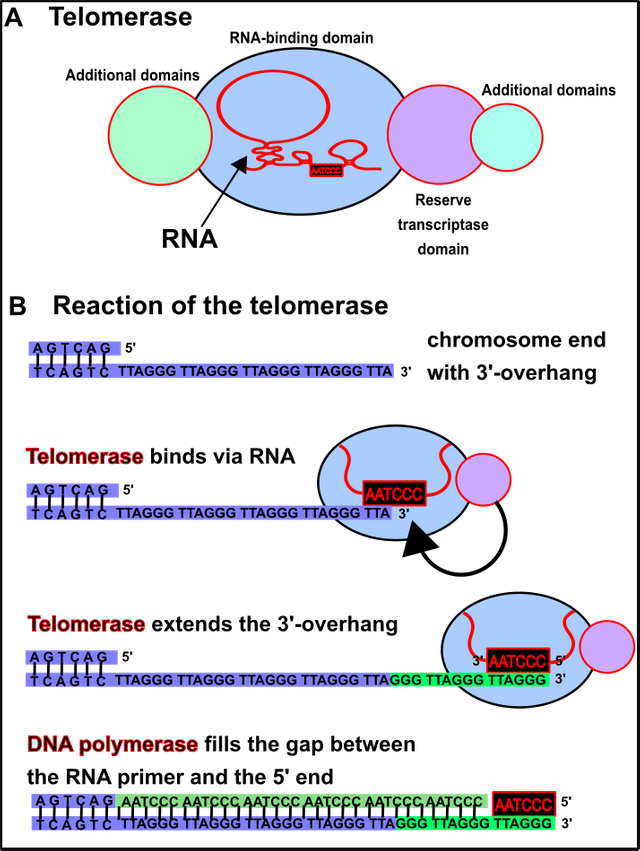
Fig.8 The rescue of the chromosome ends. Made by Chapper - unrestricted use allowed
The telomerase binds to the overhanging DNA single strand through an RNA primer which is part of the enzyme. This RNA primer always matches the telomeres because of the repetitive sequence TTAGGG [1]. Now, the telomerase adds fresh nucleotides (DNA) to the overhanging end, therefore lengthening the overhang a bit. The telomerase thus effectively transcribes an RNA sequence into a DNA sequence. This type of enzyme is also referred to as reverse transcriptase or RNA-dependent DNA polymerase. After everything has been extended, now the usual DNA polymerase fills up the strand using the free 3'-OH of the RNA primer (see above, Fig.2). Last but not least, numerous proteins (so-called telomere-binding proteins, see Fig.9) bind to this telomeric DNA, eventually forming a loop at the termini for protection.
The job is done!
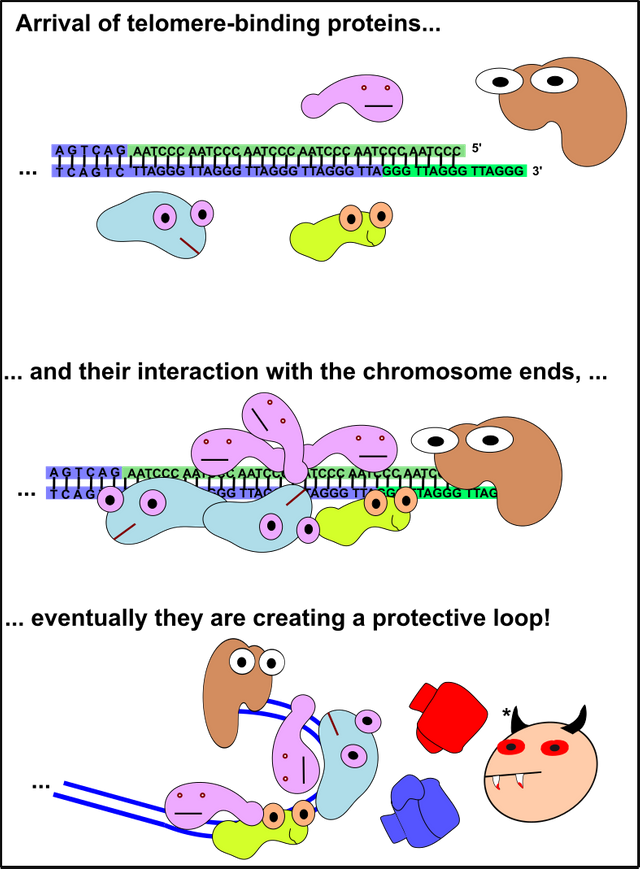
Fig.9 Protection of telomeres by binding proteins. (* Attention the vampire is not Our Cellular Packman, but confusions are not excluded). Made by Chapper - unrestricted use allowed
But that's not all. You need to know that not only the nucleoprotein telomerase (protein + nucleic acid!) is involved.
Many other factors are also of huge importance:
- You need at first proteins to find the telomeres.
- In addition, it must be prevented that the cellular DNA damage repair mess up your telomeres. Therefore, additional specialized proteins are of importance.
- Furthermore, all the proteins must be linked to enable a working complex.
- Additional proteins are needed to bring the telomerase and its RNA together.
- This RNA must be created and this also needs a lot of various proteins.
- You need some proteins to monitor the entire scene.
- Moreover, the transport of the finished telomerase complex must be arranged.
- Not forgetting: All the proteins involved must be formed before everything starts, this requires a huge regulatory machinery.
- and there are many many other processes around.
In addition, the RNA of telomerase must be perfect. The RNA for the telomeres contains 451 nucleotides in humans, but only 6 nucleotides are thought to interact with the DNA. The remaining 445 nucleotides are important for correct folding, interaction with the protein, regulation and many other tasks [1, 2].
Taken together a big armada of various molecules (mainly proteins) is dedicated (in yeast encoded by up to 400 genes!!! [3]) for maintaining telomere length.
** And now the bad news. Even though you have such an efficient machinery in your body, it actually brings you ....... **
….. Nothing!!!
Why?
Well, the telomerase is after embryonic development inactivated in the most cells of your body except sperm cells, activated lymphocytes, and stem cells [1].
That means your telomeres are getting shorter and shorter after each replication. The ends are being "eaten" in the replication phase when the binding proteins are absent. So your genomic instability moves on and it's only a matter of time before the telomeres are so short that you literally look really old.
That's a matter of fact!
But don’t panic!
For almost every one of you there is help!
The options you got will be discussed in the upcoming articles.
Until then I just can recommend to you:
Don’t get stressed!
Thank’s for reading.
So long!
Chapper
Annotation
I've made all the illustrations in this article myself. You can use them for whatever you want. But please refer to his article. Thank you.
References
- My brain
- The book W. Janning, E.K., Genetik: Allgemeine Genetik - Molekulare Genetik - Entwicklungsgenetik. 2004: Georg Thieme Verlag.
- As well as the following literature
- Cong, Y.S., W.E. Wright, and J.W. Shay, Human telomerase and its regulation. Microbiol Mol Biol Rev, 2002. 66(3): p. 407-25, table of contents.
- Schmidt, J.C. and T.R. Cech, Human telomerase: biogenesis, trafficking, recruitment, and activation. Genes Dev, 2015. 29(11): p. 1095-105.
- Kupiec, M. and R. Weisman, TOR links starvation responses to telomere length maintenance. Cell Cycle, 2012. 11(12): p. 2268-71.

This is a truly remarkable post.
This is simply brilliant informative content.
Straight to the point and answering an important question for students and experts alike.
I am fascinated how nature has evolved to build such intricate machinery together. Incredible.
It begs to be posted on StemQ.😉
Honestly, many thanks for such a great post.
Thank you for your kind words.
I hope that the post can help some people to get better into this subject.
If someone has a question about telomeres, sure!
Regards
Chapper
This post has been voted on by the SteemSTEM curation team and voting trail in collaboration with @utopian-io and @curie.
If you appreciate the work we are doing then consider voting all three projects for witness by selecting stem.witness, utopian-io and curie!
For additional information please join us on the SteemSTEM discord and to get to know the rest of the community!
Hi @chappertron!
Your post was upvoted by Utopian.io in cooperation with @steemstem - supporting knowledge, innovation and technological advancement on the Steem Blockchain.
Contribute to Open Source with utopian.io
Learn how to contribute on our website and join the new open source economy.
Want to chat? Join the Utopian Community on Discord https://discord.gg/h52nFrV